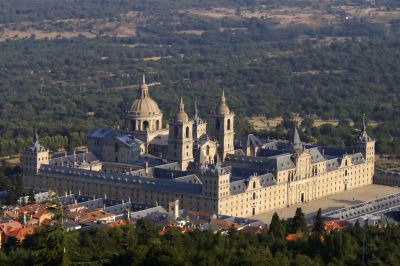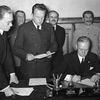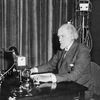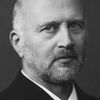14.11.2023 | 08:57
Conservatives and Classical Liberals: Natural Allies
European Diary: The Escorial, June 2021
 Finally the Plague was over. My first trip abroad after the Covid Epidemic was in June 2021 to Madrid where I lectured at the Summer University organised jointly by the Brussels research institute New Direction and the Spanish think tank Fundaciˇn Civismo. It was held at the Escorial, the palace built near Madrid in 1563–1584 by King Philip II of Spain.
Finally the Plague was over. My first trip abroad after the Covid Epidemic was in June 2021 to Madrid where I lectured at the Summer University organised jointly by the Brussels research institute New Direction and the Spanish think tank Fundaciˇn Civismo. It was held at the Escorial, the palace built near Madrid in 1563–1584 by King Philip II of Spain.
On 14 June two eminent Spanish scholars, Pedro Schwartz, Research Professor of Economics at the CEU San Pablo University in Madrid, and Francisco JosÚ Contreras, Professor of Jurisprudence at the University of Sevilla and Member of the Spanish Parliament for Vox, gave interesting presentations on liberalism and conservatism, to which I subsequently responded. I have known Professor Schwartz for more than forty years as a fellow member of the international academy of classical liberal and conservative scholars, the Mont Pelerin Society, founded by Anglo-Austrian economist and philosopher Friedrich von Hayek in 1947. Schwartz, a disciple of Anglo-Austrian philosopher Karl R. Popper at the London School of Economics, was President of the Mont Pelerin Society in 2014–2016. Although in 2021 he was already 86 years, he was as lively and eloquent a speaker as ever. Almost thirty years younger than Schwartz, Contreras also contributed many insights at the Summer School. He belongs to a group of Spanish scholars who are trying to counter attempts by left-wing intellectuals to distort history, not least Spanish history.
The Common Ground
In my first talk, I agreed with Schwartz and Contreras that there is today much common ground between conservatives and classical liberals although some kinds of conservatisms are illiberal whereas some kinds of liberalisms are anti-conservative (for example romantic individualism which replaces the principle of liberty under the law with the demand for unrestricted self-expression). I described the long tradition of what could be called conservative liberalism, tracing it all way back to the thirteenth century, to Icelandic chronicler Snorri Sturluson and Italian philosopher St. Thomas Aquinas. In both thinkers, the twin ideas of government by consent and the right to rebel against tyrants were present, although the conservative-liberal tradition was later more systematically articulated by John Locke, David Hume, and Adam Smith, the recognised authors of classical and conservative liberalism.
Perhaps the main difference between conservative liberalism and other kinds of liberalism can be brought out by contrasting interpretations of four revolutions in Western history. Conservative liberals supported the 1688 British Revolution and the 1776 American Revolution because they were made in order to preserve and extend existing liberties, whereas they opposed the 1789 French Revolution (as it evolved after a promising beginning) and the 1917 Russian Revolution because they were made in order to reconstruct the whole of society by a small political sect and to impose the values held by this sect on the rest. The four leading principles of conservative liberalism, I said, were private property, free trade, limited government, and respect for traditions. I added that in my opinion von Hayek had offered a profound synthesis of conservative insights and classical liberal principles with his theory of inevitable individual ignorance which could only be overcome by the discovery process of a free society. In my second talk, I discussed my recent book in two volumes, Twenty-Four Conservative-Liberal Thinkers.
Reflections in the Escorial
In the Escorial there is a monastery, and the monks kindly took us on a special tour of the immense palace, the world’s largest Renaissance building. We saw the surprisingly modest offices of King Philip II from which he tried, with scant success, to rule the Spanish Empire. He strove hard to keep the rebellious Netherlands under his control, and there is little doubt that Spanish novelist Miguel Cervantes was alluding to him when describing the battle of Don Quixote against what turned out to be windmills, by no coincidence an almost integral part of Dutch landscape. Indeed, Cervantes’ celebrated novel can be read as a parody of the futile and ultimately absurd project of trying to conquer foreign and distant countries, the quixotic battle against windmills.
Walking around in the Escorial, I could not resist reflecting on Spanish history. One lesson from it is the tragic mistake committed by the grandparents of Philip II, Ferdinand and Isabel, when they drove the Jews out of Spain, thereby losing some of their most enterprising subjects. Russian-American thinker Ayn Rand posed a challenging question in her novel Atlas Shrugged: What happens if the most productive elements of society must leave? Spain provides one answer: Stagnation (and then, of course, we are ignoring all the personal tragedies). Another and more uplifting lesson of Spanish history is the relatively smooth transition from dictatorship to democracy in the 1970s, where the monarchy played a crucial role, ensuring continuity and stability. It facilitated this transition that under Francisco Franco Spain was never a completely totalitarian country. It had many more foci or centres of authority than government, besides the royal family perhaps most importantly the Church and the business community. Liberty can sometimes be an unintended consequence of authority being dispersed.
(Column in The Conservative 20 October 2023.)
Flokkur: Stjˇrnmßl og samfÚlag | Breytt 18.11.2023 kl. 14:41 | Facebook








